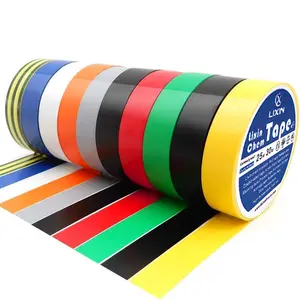Popular in your industry























































































 Ready to Ship
Ready to Ship





































































































































Top categories
About electrical straps
Introduction
In the world of electrical work, safety and efficiency are paramount. One often overlooked component that plays a significant role in achieving these goals is the humble electrical strap. Also known as grounding straps, these versatile components are integral to a wide range of industries, including automotive and construction. They provide a reliable grounding and electrical safety in applications that require durability and flexibility. This article delves into the various types of high-quality electrical straps available on Alibaba, their applications, and how to choose the right one for your project. We also explore their installation techniques and the impact they have on electrical work.
Understanding the Role of Electrical Straps
Electrical straps, also known as grounding straps, play a crucial role in ensuring safety and performance in various industries, including automotive. These components provide a reliable grounding and electrical safety in applications that require durability and flexibility. In the automotive industry, they connect the vehicle’s battery negative terminal and the chassis or engine block, providing a low-resistance path for electrical current. This allows for the safe dissipation of electrical charges and helps prevent electrical shock hazards.
Types of High-Quality Electrical Straps
When it comes to high-quality electrical straps, Alibaba offers a wide variety. These include connectors, elbows, couplings, adapters, straps, and more. They are compatible with various conduit types such as EMT (Electrical Metal), RMC (Rigid Metal), FMC (Flexible Metal), IMC (Intermediate Metal), and PVC. The materials used for these straps range from steel, alloy, PVC, to polypropylene. The straps come in different sizes, ensuring a perfect fit for your project. Whether you need a single strap or a pack of 200, Alibaba has got you covered.
Metal Straps
Alibaba's 1/2 in 1-hole conduit straps, also known as electrical straps, are made of zinc-plated steel, offering corrosion resistance for various indoor/outdoor applications. These metal straps are designed to secure Electrical Metallic Tube (EMT) conduits to wood, masonry, or similar surfaces. They are preferred where a greater load bearing is required by the National Electrical Code (NEC). The oversized bolt holes make alignments of the fastener quick and easy. These conduit straps are UL Listed, ensuring their quality and reliability.
Plastic Straps
Plastic strapping, a type of electrical strap, includes three major types: polyester, polypropylene, and nylon. Polypropylene strapping has the least initial tightness after a joint is created and the highest relaxation over time. Polyester strapping is much stronger than polypropylene strapping. Nylon strapping, often referred to as a superior nonmetallic strap, was brought into the forefront of packaging operations in the 1960s. Its break strength is three to four times that of an un-oriented nylon strap, making it strong enough to secure pallet loads during shipments.
Choosing the Right Electrical Straps for Your Project
Choosing the right strapping material for your project depends on various factors such as load size, shape, composition, transportation methods, and environmental conditions. Steel strapping is durable and ideal for heavy loads, but it can be hard to handle. Composite strapping is safer and more flexible, suitable for irregular packages. Plastic strapping, including polypropylene, woven polyester, and polyethylene strapping, is economical and versatile, used in a wide range of temperatures and applications. Each type has its unique advantages and is suited to specific applications.
Considerations for Material and Size
When choosing electrical straps, or ground straps, material and size are crucial considerations. The primary material should be highly conductive, with copper being a popular choice due to its excellent conductivity and affordability. Stainless steel, while not as conductive, offers superior corrosion resistance, making it suitable for outdoor use or frequent sanitization. The size, or AWG, of the strap also matters, with different sizes offering varying amperage ratings. Customization is possible to suit specific applications, ensuring your grounding solution withstands environmental constraints.
Load Capacity and Safety
Understanding the working load limit (WLL) of electrical straps is crucial for safety. The WLL, which should be clearly visible on the strap or its label, indicates the maximum load that the strap can safely handle. Federal regulations require the total ratings of all straps used to be at least half the weight of the load you're carrying. Straps should be of high quality, without any frays or tears, as these can compromise their strength and safety. Remember, the thicker and wider the strap, the stronger it is. However, the ultimate guide to a strap's strength is its WLL rating.
Installation Techniques for Electrical Straps
When it comes to installing electrical straps, there are several methods you can consider. Some prefer to mount the strap with the hole above the conduit, while others place it below. Alternating the position of the straps is another technique used by some professionals. However, the choice often comes down to what looks best at the time of installation. Regardless of the method, it's crucial not to overlook the importance of proper installation to ensure safety and efficiency.
Proper Installation Practices
Proper installation of electrical straps is crucial for securing cut-in electrical boxes. Start by marking and cutting the hole for the box. Insert the electrical box, ensuring to feed the cables through the box opening, add clamps to the cables, and thread the cable ends into the box. Install the straps and bend them accordingly. These straps secure the box by grabbing on behind the drywall, providing firm support. Remember, if you're hanging new drywall, install all wiring and electrical boxes before the drywall to avoid cut-ins.
Safety Precautions During Installation
When installing electrical straps, safety is paramount. Always ensure equipment is properly grounded to provide an alternate path for electricity, rather than going through a person. When working in wet or damp locations, use a Ground Fault Circuit Interrupter (GFCI) to ensure any electrical shock is brief. Also, when servicing and maintenance tasks involve electricity, prevent unexpected startup of equipment through lockout/tagout procedures. Remember, electrical safety is not to be taken lightly; it's always better to ask a qualified person to perform tasks that require training.
The Impact of High-Quality Electrical Straps on Electrical Work
High-quality electrical straps have a significant impact on electrical work. Their robust design, made from durable metals, ensures longevity and reliability, even under mechanical stress and varying temperatures. They play a crucial role in securing and organizing cables in various industries, including construction and automotive. By preventing tangles and reducing clutter, they contribute to a more efficient and safer workspace. Their adjustable nature allows for a secure grip on different objects without causing damage, ensuring optimal performance.
Conclusion
In conclusion, high-quality electrical straps are indispensable tools in the realm of electrical work. They ensure safety, enhance performance, and contribute to the efficiency of various industries. The choice of strap depends on several factors, including load size, shape, composition, transportation methods, and environmental conditions. Proper installation is crucial to maximize their benefits and ensure safety. Despite their seemingly simple design, these straps play a significant role in securing and organizing cables, reducing clutter, and creating a safer workspace. Investing in high-quality electrical straps is a step towards revolutionizing your electrical work, ensuring longevity, reliability, and optimal performance.








































